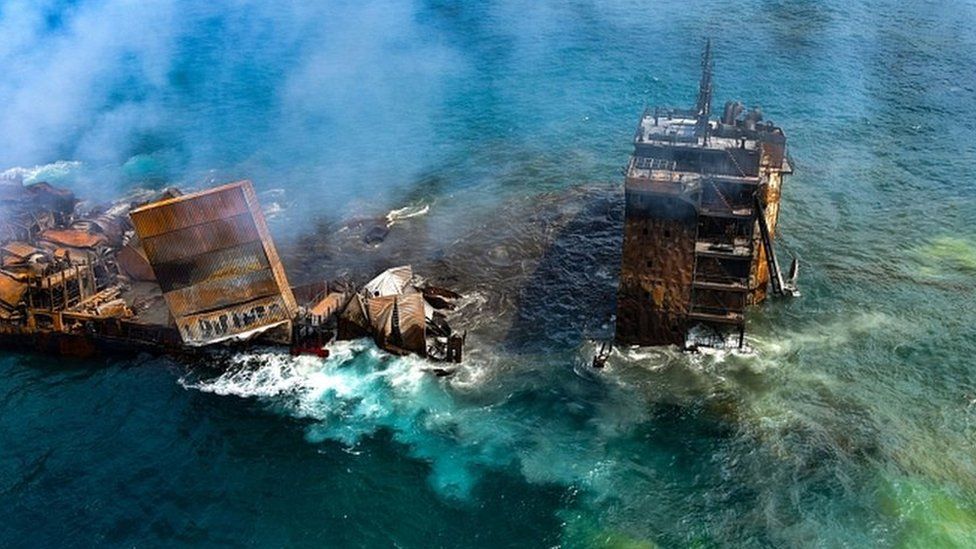SOURCE: BBC
DATE: June 10, 2021
SNIP: Earlier last month, a cargo ship carrying chemicals caught fire off the coast of Sri Lanka – leaving in its wake an environmental disaster that the island will likely have to live with for decades.
For days it stood burning off the Sri Lanka coast, plumes of thick dark smoke that could be seen from miles away. But the X-Press Pearl has now fallen silent, lying half sunken off the coast of Sri Lanka, its hull resting on the shallow ocean bed.
But though the flames have now been doused – the problems have only just begun.
Onboard the ship, there are still towers of containers stacked upon each other, many containing chemicals highly dangerous to the environment – some of these have already leaked into the water, sparking fears that it may poison marine life.
Additionally, tons of tiny plastic pellets have already washed up on local beaches nearby. And then there’s the hundreds of tonnes of engine fuel sealed in the sunken hull that could also potentially leak into the sea.
Aside from the environmental threats, there are also devastating consequences for the local communities, fishermen who overnight lost their livelihoods and will likely suffer for years to come.
One thing stands out when looking at photos of the disaster – tiny round pieces of plastic that stretch out almost as far as the eye can see.
These plastic pellets, also called nurdles, are used to make nearly all plastic goods.
“There were some 46 different chemicals on that ship,” Hemantha Withanage, a Sri Lankan environmental activist and founder of the Centre for Environmental Justice in the capital Colombo, told the BBC.
“But what’s been most visible so far are the tonnes of plastic pellets.”
Since late May, such pellets from the X-Press Pearl cargo have ended up on the Negombo beaches while fish have already been washed up with bloated bellies and pellets stuck in their gills.
The most long-lasting impact, likely to affect the country for decades, is that of chemical pollution.
Among the most dangerous elements on board the ship are nitric acid, sodium dioxide, copper and lead, says Mr Withanage.
Once in the water, these chemicals make their way into the bellies of the local marine life.
Small fish might die quickly as a result of poisoning, but bigger ones are less likely to. Instead, feeding on smaller fish, the toxins will slowly build up in their bodies over time.
This means fish from the area will be dangerous for humans – not just for now, but for years to come.
While there have been shipwrecks before, Sri Lanka has never faced one with such poisonous cargo – and the country is not well prepared for a difficult job like this.

